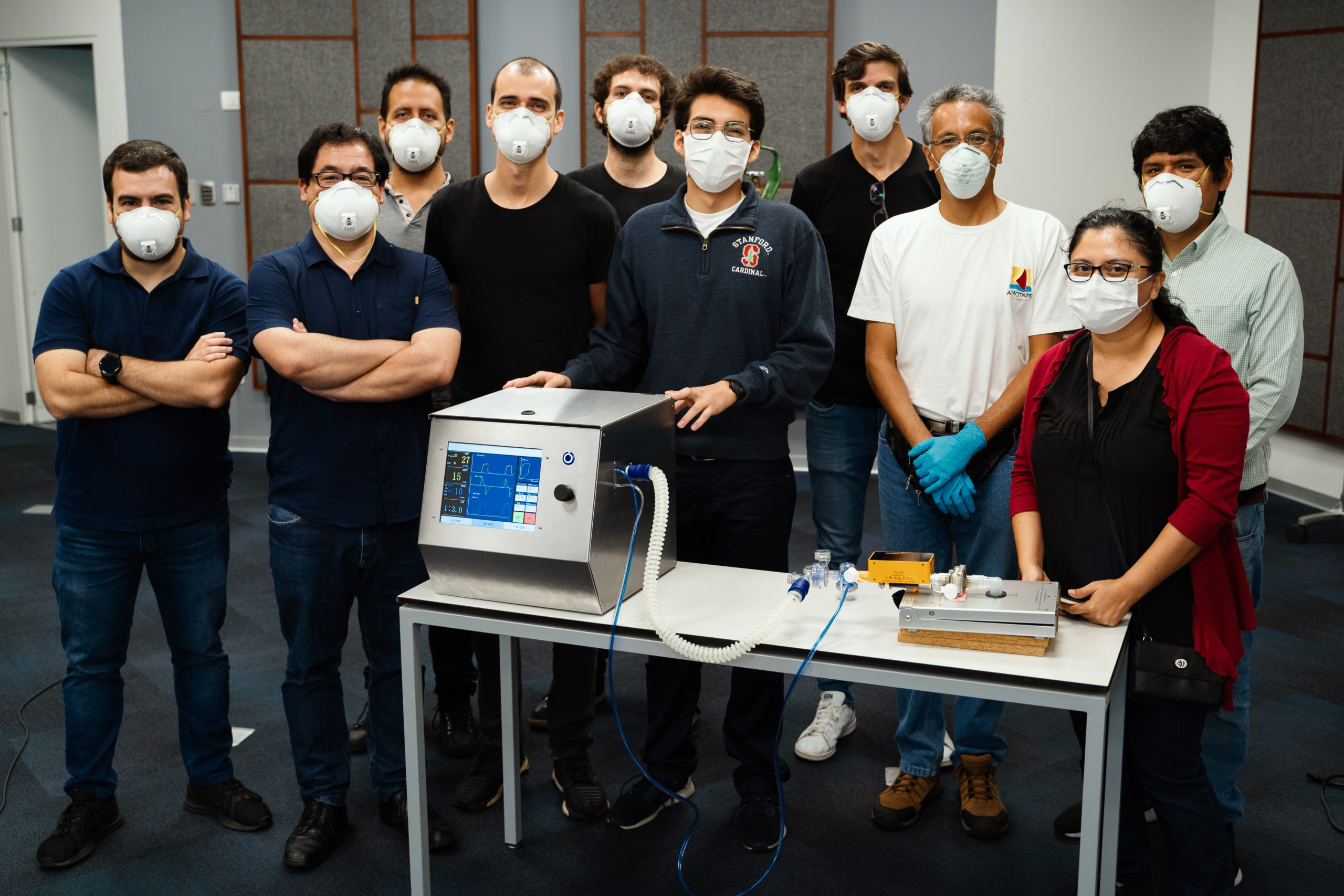When Marcelo Peña ’23 envisioned his first spring at Stanford, it was consistent with the often-told narrative new students are promised: spending days in the sun with frosh dorm friends, exploring new classes and interests, perhaps even taking a lighter course load. Instead, he found himself back in his home country of Peru, meeting with his nation’s president as part of an effort to curtail the effects of the COVID-19 pandemic in the region.
“I’ve always believed what someone can do with one dollar, an engineer can accomplish with a dime,” said Peña, who plans to major in computer science.
Peña has put his beliefs into action. Since departing from Stanford this spring, Peña has been working with a team of Peruvian researchers to engineer a low-cost ventilator for COVID-19 patients.
Peru faces a lack of medical resources and economic strain but was one of the first Latin American countries to address the novel coronavirus, implementing a strict, nationwide lockdown since March 16. Despite these efforts, the country has reported more than 50,000 cases and 1,500 deaths.
“Yesterday [the day before the interview], we had 3,500 new COVID cases — only in one day,” Peña said. “And also as of yesterday, there is no more ICU [equipment] in the country. That means every person who needs a ventilator today, will die.”
After searching for opportunities to help with coronavirus relief, Peña contacted a group of researchers led by Benjamin Castañeda at the Pontifical Catholic University of Peru (PUCP), who were attempting to develop new, low-cost ventilators in response to the growing need for ICU equipment. He has been working with them since he returned to Peru.
“As soon as I could, I approached them — I told them that I could help with the software part of the phase, and the rest is history,” he said.
Typical rapid response ventilators in Peru utilize outdated technology and may put patients at risk of suffering barotrauma, an injury caused by changes in air pressure. The team aims to craft an updated ventilator, complete with a touch screen and an automated system that can efficiently pump air into a patient. It will include features that help control the air volume and pressure, as well as detect breathing patterns in order to pump air into patients while they sleep.
The team estimates it will cost around $1,500 — a stark reduction from the market price of other ventilators, which can cost up to $30,000.
So far, it has been a time-intensive process. Peña said that he has been working 16-hour days, seven days a week on the ventilator initiative, in addition to taking a full course load at Stanford.
“I think it’s definitely hard to balance those two worlds because as we know, Stanford requires a lot of effort,” he said. “But I feel my involvement on the ventilator team gives me a sense of purpose. That I can actually change the real world from what I’m learning in classes.”
One course, CS 107E: “Computer Systems from the Ground Up,” has been particularly useful to the project, Peña said. He took the course last quarter, and the material he learned has enabled him to help code the firmware that controls the ventilator.
“The class taught me that there is a very deep connection between electrical engineering and computer science,” he said. “It taught me that there is a bridge between those two worlds, and how to make use of it. And that’s what I’ve been contributing to the team.”
But building a functional product is only one part of the equation.
“It’s the first medical device that was designed and produced on Peruvian soil, so we had to go through a lot of challenges to get the necessary framework right,” he said. “We needed to get some sort of authorization, since we’re dealing with people’s lives — but there is no equivalent of FDA approval here.”
The government has been supportive of their initiative. Peruvian President Martin Vizcarra regularly meets with the team and has helped to expedite the authorization process, Peña said.
Peña hopes that the ventalitors will be produced and distributed within the next two to three weeks.
“It’s definitely a different spring then I envisioned, but it’s showing some other sides of Stanford that I never thought I would see,” he said. “I see the most creative students doing things around the world trying to change situations in their countries, people are caring for their families, and worried about the safety of their friends. And it brings a new light onto what Stanford is — not only a place of academic strength, but also a place of empathy and friendship.”
Contact Meghan Sullivan at meghans8 ‘at’ stanford.edu.
